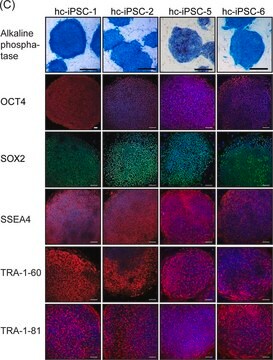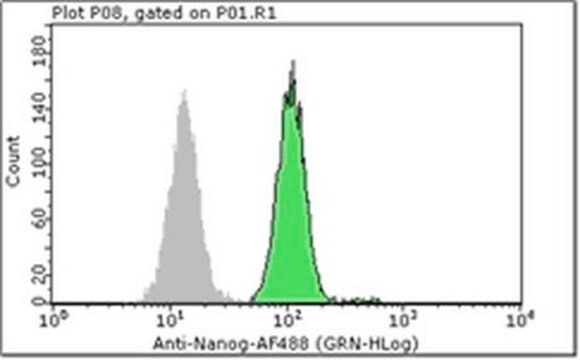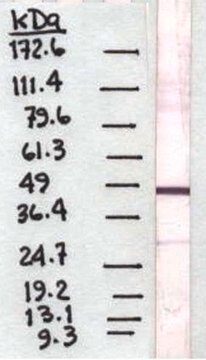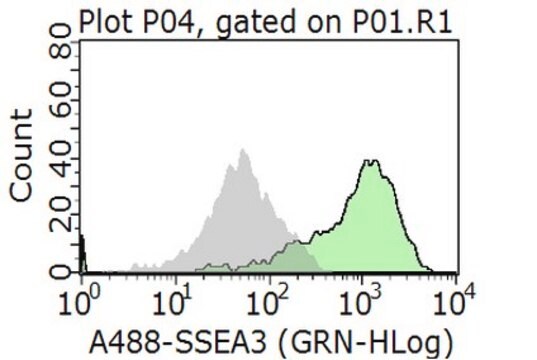MAB4381
Anti-TRA-1-81 Antibody, clone TRA-1-81
clone TRA-1-81, Chemicon®, from mouse
Synonym(s):
Clone TRA-1-81 Antibody, TRA-1-81 Detection Antibody
About This Item
Recommended Products
biological source
mouse
Quality Level
antibody form
saturated ammonium sulfate (SAS) precipitated
antibody product type
primary antibodies
clone
TRA-1-81, monoclonal
species reactivity
human
manufacturer/tradename
Chemicon®
technique(s)
flow cytometry: suitable
immunocytochemistry: suitable
immunofluorescence: suitable
immunoprecipitation (IP): suitable
western blot: suitable
input
sample type: human embryonic stem cell(s)
sample type induced pluripotent stem cell(s)
isotype
IgM
shipped in
wet ice
target post-translational modification
unmodified
Related Categories
General description
Specificity
Immunogen
Application
Western Blot: A previous lot of this antibody was used in WB.
Immunoprecipitation: A previous lot of this antibody was used in IP.
Immunohistochemistry: A previous lot of this antibody was used in IH.
Flow Cytometry: A starting range of 10-20 µg/mL is suggested.
Optimal working dilutions must be determined by the end user.
Stem Cell Research
Pluripotent & Early Differentiation
Target description
Physical form
Storage and Stability
Analysis Note
Human embryonic stem cells
Other Notes
Legal Information
Disclaimer
Not finding the right product?
Try our Product Selector Tool.
Storage Class Code
12 - Non Combustible Liquids
WGK
nwg
Flash Point(F)
Not applicable
Flash Point(C)
Not applicable
Certificates of Analysis (COA)
Search for Certificates of Analysis (COA) by entering the products Lot/Batch Number. Lot and Batch Numbers can be found on a product’s label following the words ‘Lot’ or ‘Batch’.
Already Own This Product?
Find documentation for the products that you have recently purchased in the Document Library.
Articles
Skip weekend feedings. Defined serum-free and feeder-free expansion media for human pluripotent stem cells (ES and iPS cells). See publications and protocols.
The Simplicon™ RNA Reprogramming Technology is a next generation reprogramming system that uses a single synthetic, polycistronic self-replicating RNA strand engineered to mimic cellular RNA to generate human iPS cells.
Our team of scientists has experience in all areas of research including Life Science, Material Science, Chemical Synthesis, Chromatography, Analytical and many others.
Contact Technical Service







